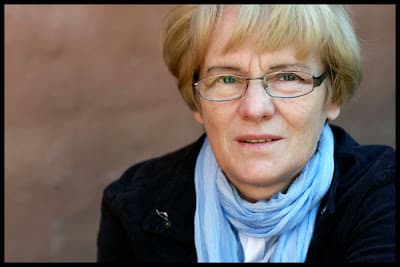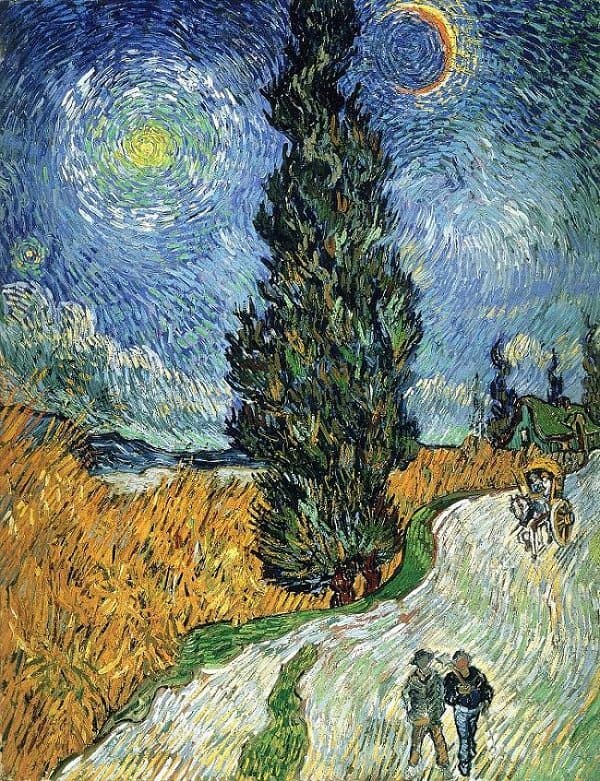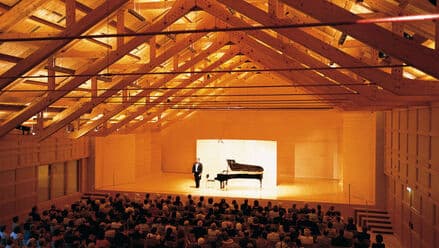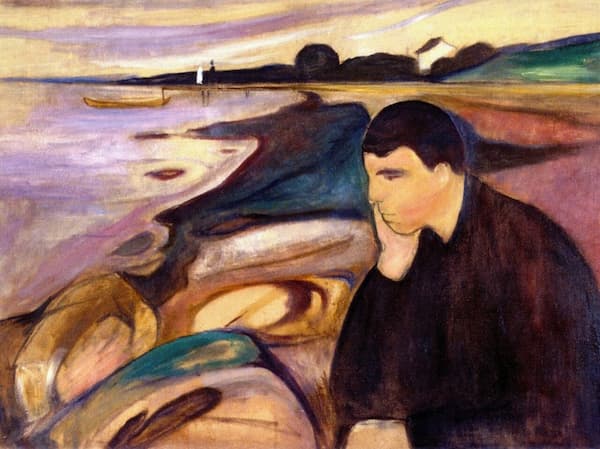Grażyna Pstrokońska-Nawratil: Le soleil
One of the important elements of so much of the Impressionist landscape painting is the sun. From the very first Impressionist painting, Monet’s Impression, Sunrise the sun is important, in this case, probably the most important part of the image.

Monet: Impression, Sunrise, 1872 (Paris, Musée Marmottan Monet)
The Impressionists, or Realists as they would like to be known, painted what was there, not what traditional training told them that should be there. Monet’s painting of the port of Le Havre, one of a series of six that showed the port ‘during dawn, day, dusk, and dark and from varying viewpoints, some from the water itself and others from a hotel room looking down over the port’, took its title from a throw-away comment by Monet. When asked for a title for the catalogue of the 1874 show where it had its debut, Monet said that as it wasn’t really a view of the harbour, it should just take the title Impression.
Polish composer Grażyna Pstrokońska-Nawratil (b. 1947) used the painting as the first part of her three-part work entitled Le soleil, concerto for percussion and orchestra (1991). In her first movement, she uses the marimba to set up the movement of the waves – both as it affects the little boats and as it reflects on the movement of the water. The hushed dynamics could be the muffling mist that hugs the harbour.

Grażyna Pstrokońska-Nawratil (Photo by Marta Filipczyk)
Grażyna Pstrokońska-Nawratil: Le soleil – I. Impression, Sunrise (Claude Monet) (Marianna Bednarska, marimba; Polish Sinfonia Iuventus Orchestra; Maciej Tworek, cond.)
The second movement is built around one of the most famous Impressionist paintings, done in the pointillist style. George Seurat’s Un dimanche après-midi à l’Île de la Grande Jatte (A Sunday Afternoon on the Island of La Grande Jatte) shows the sun through shadows – the whole painting is a study of light, colour, and form. The painting is enormous, 207.6 cm × 308 cm (81.7 in × 121.25 in), and was painted dot by dot with juxtaposed colours to trick the eye into seeing coherent single shades. Where the sun was important in Monet’s painting, in Seurat’s painting that shadow has its role: every figure in the painting is cast in shadows, either of the trees, an umbrella, or from another person.

Seurat: Un dimanche après-midi à l’Île de la Grande Jatte (A Sunday Afternoon on the Island of La Grande Jatte), 1886 (Art Institute of Chicago)
Pstrokońska-Nawratil’s movement is based less on the picture and more on the technique of endless touches and dots that Seurat used to create this work. A similar idea was used in Stephen Sondheim’s Sunday in the Park with George.
Grażyna Pstrokońska-Nawratil: Le soleil – II. A Sunday Afternoon on the Island of La Grande Jatte (Georges Seurat) (Marianna Bednarska, marimba; Polish Sinfonia Iuventus Orchestra; Maciej Tworek, cond.)
The final picture that inspired Pstrokońska-Nawratil has not the sun, but the reverse of the sun at its heart: the moon.

Van Gogh: Country road in Provence by Night, 1890 (Otterlo: The Kröller-Müller Museum)
The only things that make us realize that this is night are the muted colours and the two lights in the sky – one is the crescent moon, shown in colours of orange and yellow, and the other a star, its yellow heart expanding into green and white concentric patterns. On the road are two men walking, and a horse and carriage. At the back right is a typical Brabant cottage and a wheat field brings its bright colour, somewhat scaled back, to the left side of the work. At the heart of the image is a large wavy cypress tree, which, for Van Gogh, was the symbol of Provence.
Pstrokońska-Nawratil uses the snare drum and cymbal in her work, making her music of the scene more fraught than Van Gogh did. Is the snare drum military or symbolic of the mysteries of a shadowed road at night? The arrival of the tubular bells at the end seems to be a redeeming, saving element.
Grażyna Pstrokońska-Nawratil: Le soleil – III. Road with Cypress and Star (Vincent van Gogh) (Marianna Bednarska, marimba; Polish Sinfonia Iuventus Orchestra; Maciej Tworek, cond.)
Sun, shadow, and moon, or sun, blocked sun, and reflected sun are evident in the three paintings. The scan of the years: 1872–1886–1890 shows how far Impressionist painters could extend their idea of realism. Depicting the real colours of the world meant explorations of colour theory, of the effect of juxtaposing colours and forms, and showing a new vision of what surrounds us. Pstrokońska-Nawratil uses percussion to pick up elements of each painting, some visible, some implied.
For more of the best in classical music, sign up to our E-Newsletter




